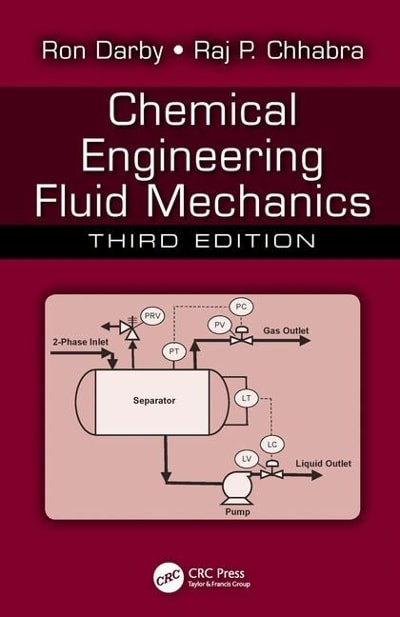A gas bubble of diameter $D$ rises with a velocity $V$ in a liquid of density $ho$
Question:
A gas bubble of diameter $D$ rises with a velocity $V$ in a liquid of density $ho$ and viscosity $\mu$.
(a) Determine the dimensionless groups that include the effects of all of the significant variables, in such a form that the liquid viscosity appears in only one group. Note that the driving force for the bubble motion is buoyancy, which is equal to the weight of the displaced fluid.
(b) You want to know how fast a $5 \mathrm{~mm}$ diameter air bubble will rise in a liquid with a viscosity of $20 \mathrm{cP}$ and a density of $0.85 \mathrm{~g} / \mathrm{cm}^{3}$. You want to simulate this system in the laboratory using water ( $\mu=1 \mathrm{cP}, ho=1 \mathrm{~g} / \mathrm{cm}^{3}$ ) and air bubbles. What size (diameter) air bubble should you use?
(c) You perform the experiment, and measure the velocity of the air bubble in water $\left(V_{m}\right)$. What is the ratio of the velocity of the $5 \mathrm{~mm}$ diameter bubble in the field liquid $\left(V_{f}\right)$ to that in the lab $\left(V_{m}\right)$ ?
Step by Step Answer:

Chemical Engineering Fluid Mechanics
ISBN: 9781498724432
3rd Edition
Authors: Ron Darby, Raj P Chhabra





